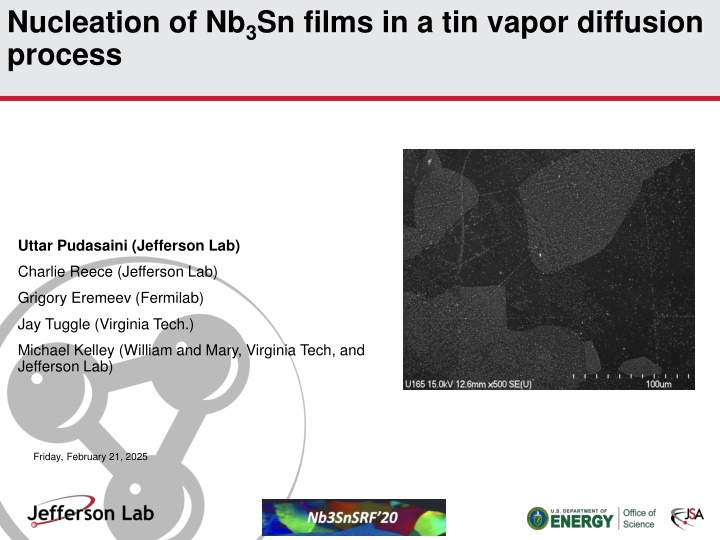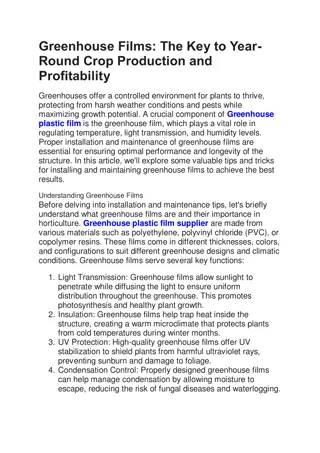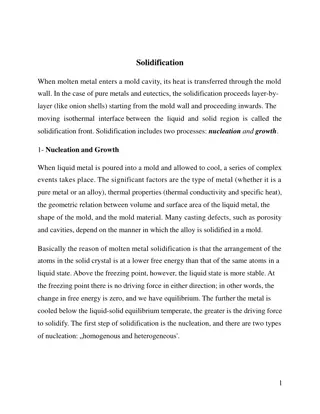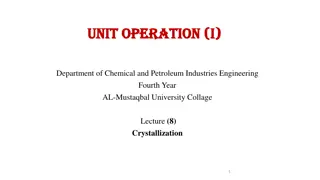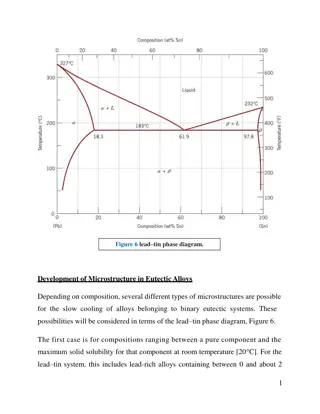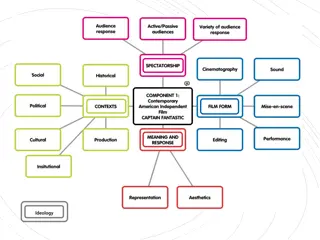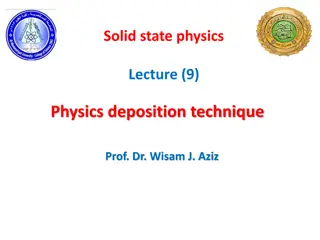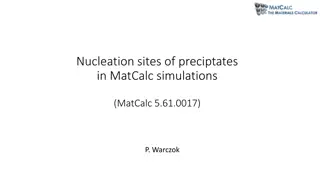Nucleation of Nb3Sn Films in Tin Vapor Process
Study on the nucleation process of Nb3Sn films in a tin vapor diffusion setup, exploring coating evolution, variation of nucleation parameters, surface analysis, and its impact on the final coating quality. The research investigates the effects of temperature, time, and SnCl2 amount on nucleation, providing insights for optimizing coatings. XPS surface analysis reveals the presence of tin layers between particles.
Download Presentation

Please find below an Image/Link to download the presentation.
The content on the website is provided AS IS for your information and personal use only. It may not be sold, licensed, or shared on other websites without obtaining consent from the author.If you encounter any issues during the download, it is possible that the publisher has removed the file from their server.
You are allowed to download the files provided on this website for personal or commercial use, subject to the condition that they are used lawfully. All files are the property of their respective owners.
The content on the website is provided AS IS for your information and personal use only. It may not be sold, licensed, or shared on other websites without obtaining consent from the author.
E N D
Presentation Transcript
Nucleation of Nb3Sn films in a tin vapor diffusion process Uttar Pudasaini (Jefferson Lab) Charlie Reece (Jefferson Lab) Grigory Eremeev (Fermilab) Jay Tuggle (Virginia Tech.) Michael Kelley (William and Mary, Virginia Tech, and Jefferson Lab) Friday, February 21, 2025
Outline Coating evolution Nucleation Variation of nucleation parameters Surface studies Conclusion 2
Nb3Sn coating evolution during vapor diffusion process Nb, Sn and SnCl2 3 2 4 1 1 Nucleation 3
Nb3Sn coating evolution during vapor diffusion process 3 2 4 4 2 3 Growth 1 2 4 3 4 4
Nucleation 3 1 2 4 1 Nucleation 5
Background At Siemens AG (1970 s) - Nb spots not covered with Nb3Sn film Prescribed solution: pre-anodization combined with higher source temperature or application of tin halides Adopted at Wuppertal, Cornell, JLab, Fermilab, and others with some modification What happens after the nucleation step? - How does it help the final coating? - Can we alter the final coating by changing parameters of the nucleation step? 300 C 400 C 450 C 500 C Nucleation Temperature Nucleation Time 1 h - 4 h 1 h 1 h 0.1 - 5 h Amount of SnCl2 1 g 1 g 1 g 5 mg, 1 g 6
Variation of nucleation time and temperature 5 h at 500 C(with 1 h at 500 C 1 h at 450 C 4 h at 500 C significantly lower amount of Condition SnCl2) 2.8 0.6 3.9 0.6 10.0 0.8 1.9 0.4 Coverage by particles (%) 7
XPS surface analysis ~30 % Sn ~30 % Sn Analytical calculation indicated a potential ultra-thin layer of Sn in between particles - no thicker than a few atom layers. XPS shows more tin ! No Chlorine. 5 h at 500 C(with 5 h at 500 C(with significantly lower amount of 1 h at 500 C 1 h at 500 C 1 h at 450 C 1 h at 450 C 4 h at 500 C 4 h at 500 C significantly lower amount of SnCl2) Condition Condition SnCl2) 26.02 26.02 32.71 32.71 33.42 33.42 18.1 18.1 ?? ?? ?? + ?? ?100 ?? + ?? ?100 2.8 0.6 3.9 0.6 10.0 0.8 1.9 0.4 Talk Title Here Coverage by particles (%) 8
Scanning Auger Microscopy Elemental mapping Surface analysis shows the thin film of Sn between Sn particles. 9
AFM and TEM analysis Scan line Surface analysis shows a thin film of Sn beside Sn particles qualitatively resembling the Stranski-Krastanov growth mode. 10
Variation of particle density Scratches are decorated with a higher density of particles. In some cases, the density of particles varies in different grains of Nb. Orientation dependent adatom-surface interaction? 11
Low vs. high amount of SnCl2 500 C 1 h with 3 mg/cm2 500 C 4 h with ~20 g/cm2 More SnCl2 produces larger Sn-particles, but the similar surface coverage of Sn can be achieved with a significantly lower amount of SnCl2. 12
Coating with different nucleation profiles No significant differences in terms of structure and composition in SEM/EDS. 13
Role of Nucleation The inclusion of tin chloride in any explored nucleation profile appeared advantageous toward producing a defect-free Nb3Sn coating compared to the same coating obtained without it. 14
Role of Nucleation: coating with SnCl2 only ~16 at. % Sn XRD data: Courtesy of N. Sayeed Complete coating of the surface with some patchy areas and elongated grains. SnCl2 plays an important role to establish a continuous tin layer prior to tin evaporation during the growth process. 15
Conclusion Nucleation yields two tin forms. At higher loadings, three-dimensional particles are quite visible to scanning electron microscopy. At all loadings, a two-dimensional form is no thicker than a few atom layers evident to surface spectroscopies and analytical transmission electron microscopy. Inclusion of SnCl2 in any explored nucleation profiles is advantageous toward producing more uniform coatings. The variation of nucleation parameters may not drastically impact the final coating characteristics. The evolution of coating as it progresses from the nucleation stage to the growth stage needs further studies. 16
Acknowledgements Nanoscale Characterization and Fabrication Lab We are grateful for support from the Office of High Energy Physics, U.S. Department of Energy under grants DE-SC-0014475 to the College of William Mary and DE-SC-0018918 to Virginia Tech. Co-Authored by Jefferson Science Associates, LLC under U.S. DOE Contract No. DE-AC05-06OR23177. This material is based upon work supported by the U.S. Department of Energy, Office of Science, Office of Nuclear Physics. 17
